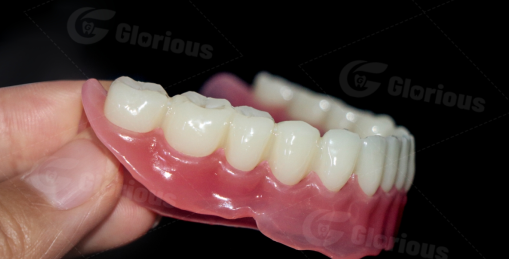—A Panoramic View from "Filling" to "Digital Manufacturing"
I. Direct Restoration: Making Caries "Invisible"
1. Class I-V Cavity Filling
Resin liquid, combined with an acid-etching and bonding technique, can restore enamel morphology and color in a single operation, leaving virtually no visible restoration in anterior areas.
2. Minimally Invasive Pit and Fissure Sealant
Flowable resin liquid is used to penetrate deep pits and fissures. After curing, it forms a 0.3-0.5 mm thick "transparent armor," which can reduce the caries rate in adolescents by over 70%.
3. Elderly Patients with Root Caries
Resin-coating technology forms a sealing layer on the root surface, preventing caries and reducing sensitivity.

II. Indirect Restoration: Strengthening the "Inlay"
1. Ceramic Inlay/Onlay Bonding
First, use liquid resin and flowable resin as a "resin base," then apply resin cement. This significantly improves the ceramic-to-tooth bond and reduces postoperative sensitivity.
2. All-Ceramic Crown and Bridge Bonding
Universal dual-curing resin cement allows for full polymerization even on the inner surface, which is not exposed to light, ensuring long-term retention of the crown and bridge.
III. Aesthetic Reconstruction: Instant Smile Enhancement
1. Direct Resin Veneers
Different shades of liquid resin are layered onto the enamel surface, reshaping and coloring the tooth in a single visit at a cost of only one-third that of porcelain veneers.
2. Reattachment of Broken Teeth
Traumatically fractured teeth can be acid-etched and reattached with liquid resin, restoring over 90% of their original flexural strength.
IV. Pediatric Dentistry: Early Indirect Protection
1. Resin Infiltration (ICON)
Low-viscosity resin replaces traditional drilling and milling, penetrating early enamel white spots and halting caries progression.
2. Bonding Prefabricated Crowns
Flowable resin acts as an adhesive to secure stainless steel crowns (SSCs) to deciduous teeth, reducing procedure time by 50%.
V. Orthodontics and Maxillofacial Surgery: The Invisible "Glue"
1. Direct Bracket Bonding
This three-step process of resin, primer, and paste securely bonds metal/ceramic brackets to the enamel surface, achieving a shear strength of up to 20 MPa.
2. Micro-implant Peripheral Sealing
Resin seals the implant neck, reducing plaque accumulation and the incidence of perioral inflammation.
VI. Digital Manufacturing: 3D Printing and Intraoral Scanning
1. Digital Impression Trays
Low-viscosity 3D printing resin is used with an LCD light-curing machine to create personalized trays with a precision of 25 μm in just 5 minutes.
2. Chairside Printing of Temporary Crowns and Bridges
Using high-strength resin liquid containing submicron fillers, the entire design-printing-polishing-and-installation process is completed in 45 minutes, with a cost per tooth of less than 10 yuan.
VII. Tooth Preparation and Protection: From "Super Teeth" to "Super Roots"
Resin coating technology is not only used for crown restorations, but also for root surfaces. After applying resin liquid to the root surface, it forms a dual-layer barrier of "acid etching and antibacterial," significantly improving the root surface's resistance to fracture and caries, earning it the name "Super Root."
VIII. Special Populations and Environments
1. Patients with Metal Allergies
Resin liquid contains no metal ions, making it the preferred choice for those allergic to nickel and chromium.
2. Patients with Dry Mouth After Radiotherapy
Dual-function resin liquid containing fluoride and antibacterial properties can reduce the incidence of radiation-induced caries.
Conclusion
From "filling" to "digital manufacturing," dental resin liquid has become ubiquitous in every aspect of dental practice. It not only makes the filling invisible to patients but also allows doctors to perform faster and more securely. With the addition of black technologies such as self-repair and bioactivity, resin liquid is pushing "tooth restoration" into a new era of "tooth regeneration".